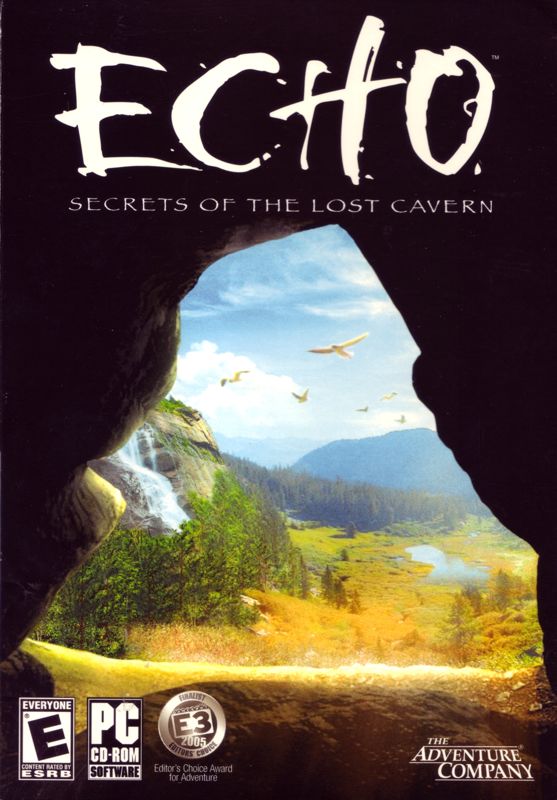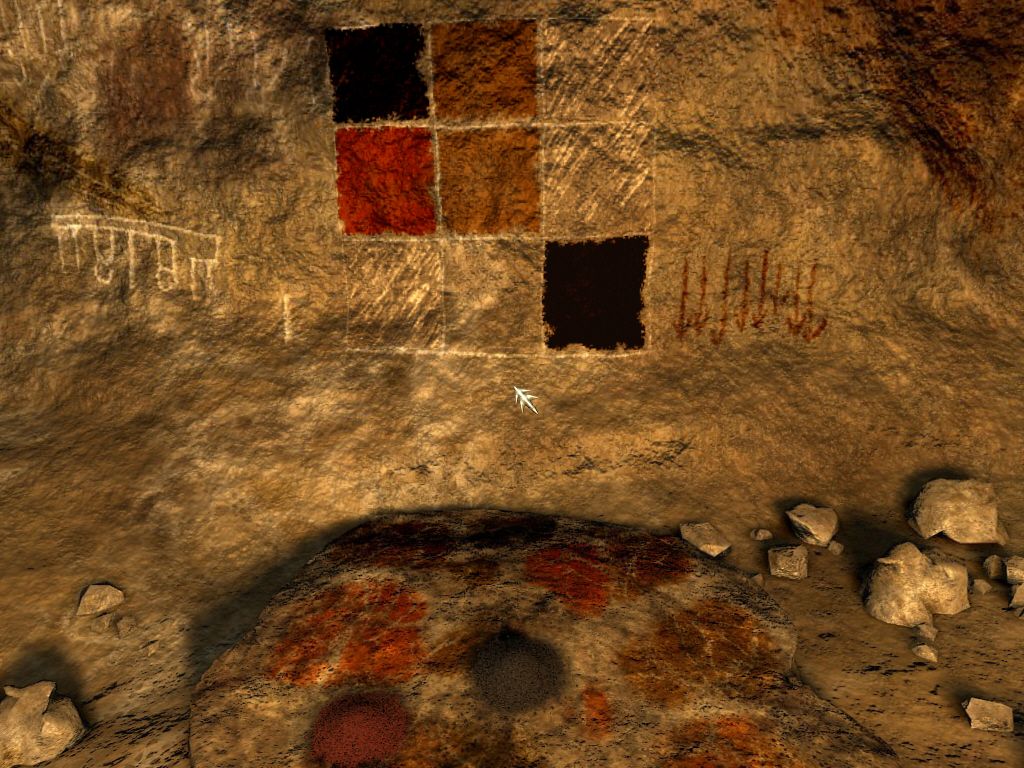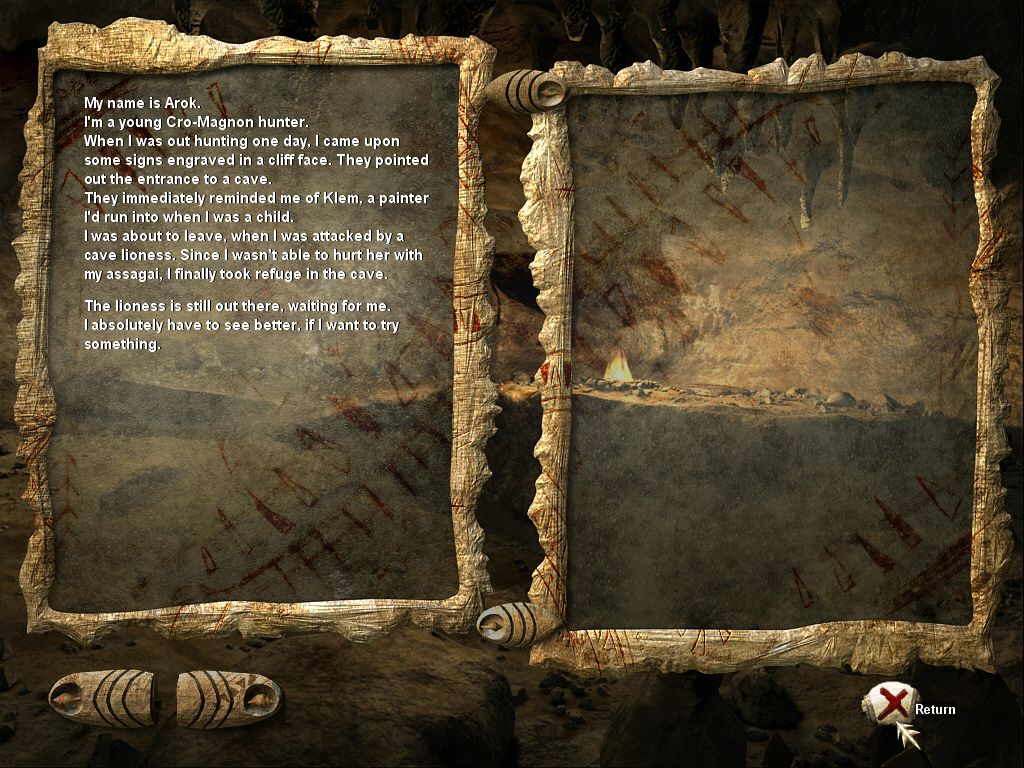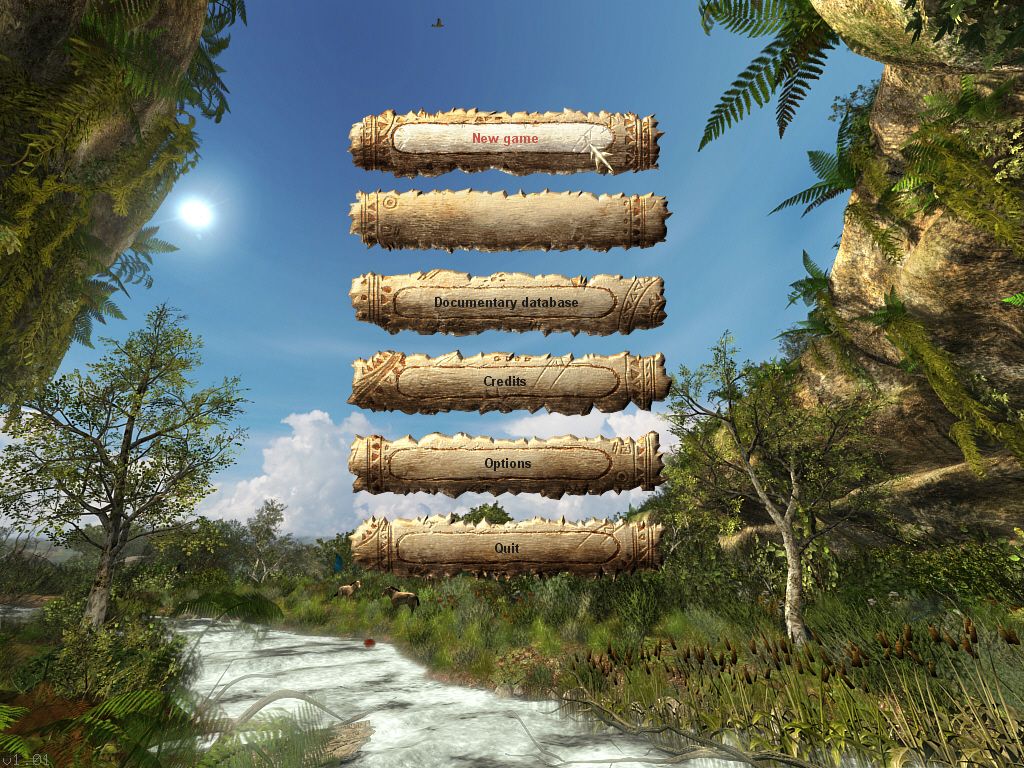Retro Replay Review
Gameplay
Echo: Secrets of the Lost Cavern builds upon the classic node-based adventure formula, guiding players from one fixed viewpoint to the next with simple mouse clicks. While there’s no direct free-roam, the ability to rotate the camera a full 360 degrees in each node offers a surprising level of immersion for a Myst-style puzzle game. This design choice encourages careful observation of every nook and cranny in the cavern, turning each transition into a mini-exploration session.
Puzzle design revolves around inventory management and environmental interaction. Players collect prehistoric tools and pigments, then combine or apply them at specific hotspots to unlock new areas or reveal hidden mechanisms. The inclusion of wall painting as an active gameplay mechanic breathes fresh air into the familiar item-use paradigm: by tracing ancient motifs, you unlock secret passages or awaken dormant devices, seamlessly blending art and logic in each challenge.
The difficulty curve is generally well paced. Early puzzles serve as gentle tutorials, teaching you how to mix pigments, apply them to cave walls, and interpret primitive symbols. As the game progresses, the riddles grow more intricate, often requiring cross-referencing multiple journal entries or revisiting earlier areas with newly acquired tools. This back-and-forth encourages you to keep detailed mental—or literal—notes.
Educational components are woven directly into the gameplay, rather than tacked on as afterthoughts. When you uncover a new fossil or decipher a Cro-Magnon tool, the game’s encyclopedia updates automatically, marked by a small shell icon. These entries not only enrich your understanding of prehistoric culture but often contain subtle hints for overcoming particularly thorny puzzles, making the learning curve feel rewarding rather than punishing.
Graphics
From the moment you step into the dimly lit passages of the Lascaux Caverns, Echo impresses with its atmospheric art direction. Each rock face is textured to mimic real limestone, complete with striations, moss deposits, and moisture drips. The result is an environment that feels both ancient and tangible, inviting you to linger and soak in the prehistoric ambiance.
The star attraction, of course, is the reproduction of the actual Lascaux cave paintings. Echo’s art team has rendered bison, horses, and deer in warm ochres and deep reds that glow softly against the gray walls. Watching these iconic images come to life under the dynamic torchlight is genuinely awe-inspiring and serves as a constant reminder of humanity’s first artistic impulses.
Character models are kept to a minimum—most of your time is spent alone in the shadows— but when Arok appears in reflection or in ceremonial murals, he’s modeled with surprising detail. Subtle facial expressions and fluid limb animations convey emotions ranging from quiet curiosity to triumphant discovery. These touches, while brief, underscore the broader sense of immersion cultivated by the game’s environments.
Performance is solid on modern hardware, with no significant frame drops or texture pop-ins. The 360-degree panoramas load swiftly, and lighting transitions occur without jarring fades. Altogether, Echo’s graphics engine masterfully balances visual fidelity with the need for puzzle clarity, ensuring you can always distinguish a usable glyph from mere decorative residue.
Story
Echo’s narrative centers on Arok, a young Cro-Magnon hunter-gatherer whose artistic instincts set him apart from his tribe. Unlike his peers, who focus on tracking prey or foraging for roots, Arok is drawn to the call of the cave walls, sensing that his brushstrokes might hold more power than any spear. This internal conflict—between survival and self-expression—drives the game’s emotional core.
As Arok delves deeper into the cavern labyrinth, he follows cryptic signs that hint at a hidden mentor, an enigmatic figure who first unraveled the magical properties of pigment. The mentor’s presence is felt more than seen, with fragments of dialogue and ghostly paintings providing breadcrumbs for you to reconstruct a mentor-pupil relationship lost to time. The mystery of this figure unfolds gradually, creating a steady undercurrent of intrigue.
Historical context is delivered through the in-game encyclopedia and occasional environmental storytelling. Discovering an ice age tool or an ancient mural doesn’t just serve a gameplay purpose; it enriches the lore of early human ingenuity. These narrative elements feel genuinely educational, painting a broader picture of our ancestors’ lives without resorting to dry textbook exposition.
What sets Echo apart from many adventure games is its lack of antagonistic forces. There’s no villain seeking to thwart Arok; rather, the obstacles are natural and archaeological. This choice fosters a contemplative atmosphere, inviting players to reflect on the primacy of art and discovery in shaping human history. It’s a slower burn, but for those who savor immersive puzzles and thoughtful world-building, it’s a narrative journey well worth taking.
Overall Experience
Echo: Secrets of the Lost Cavern excels at balancing edutainment with genuine adventure. You’re never made to feel like a mere student in a history lesson; instead, you’re an active participant in unlocking the mysteries of a lost world. The game’s puzzles are challenging enough to satisfy veteran adventure-game fans, while its integrated encyclopedia ensures newcomers can quickly get up to speed on prehistoric culture.
The mature, reflective tone may not appeal to players seeking high-octane action or flashy cutscenes, but it’s precisely what gives Echo its unique charm. Each solved puzzle and each uncovered painting feels like a tangible achievement, a small breakthrough in understanding the dawn of human creativity. For those willing to embrace its deliberate pacing, the payoff is deeply rewarding.
While the node-based movement system may feel restrictive to fans of free-roaming adventures, the 360-degree panorama approach allows for richly detailed environments without the need for resource-heavy 3D engines. Combined with the absence of time-pressure or combat, this makes for a leisurely exploration experience, ideal for relaxed evening gaming sessions.
In the end, Echo: Secrets of the Lost Cavern stands out as both a loving tribute to human origins and a thoughtfully designed puzzle adventure. If you’re drawn to historical settings, cerebral challenges, and atmospheric world-building, this game should be high on your must-play list. It’s an immersive trip back to the cradle of art, where each brushstroke you make revives the spirit of our earliest storytellers.
 Retro Replay Retro Replay gaming reviews, news, emulation, geek stuff and more!
Retro Replay Retro Replay gaming reviews, news, emulation, geek stuff and more!









Reviews
There are no reviews yet.